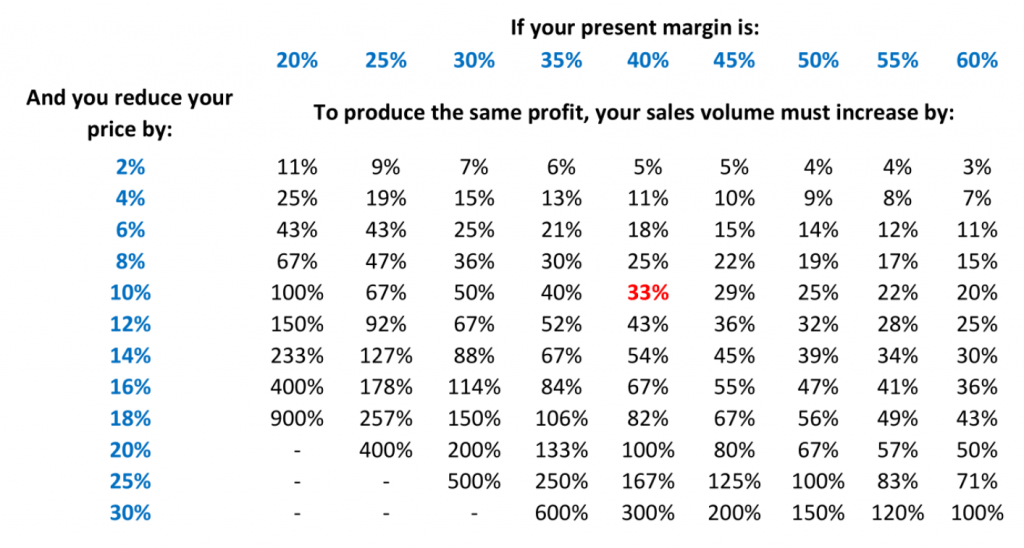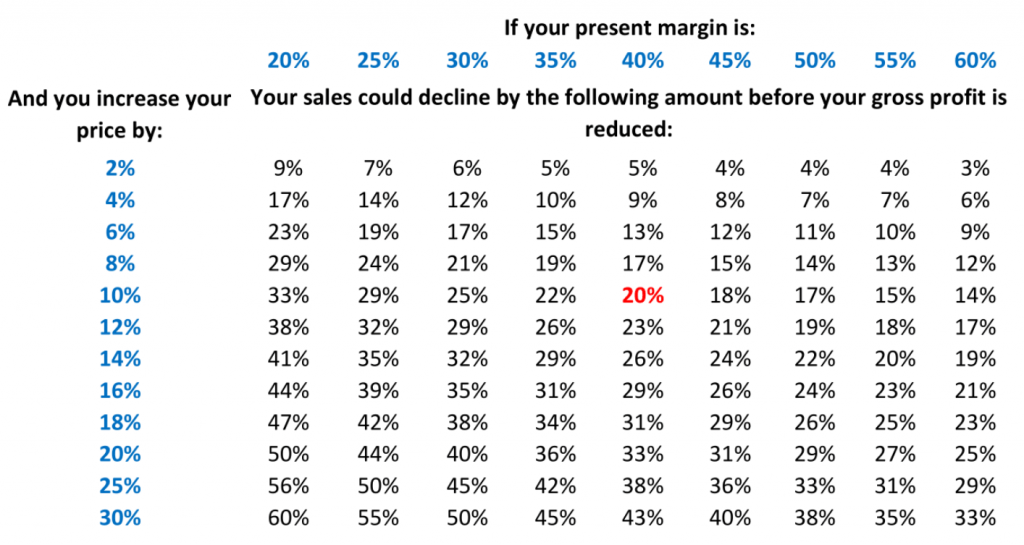Is discounting a good strategy for sales?
I guess the quick answer is “no”. Whilst it is widely used and accepted primarily in the business to consumer sector, it needs some serious thought as to the impact it can have on your bottom line.
It is also worth looking at increasing your prices and what difference that makes to your profit too.
You may not be aware of the risks involved with each of these, however the following tables may help with that. They start with the margins that you make on your product or service and the percentage loss or gain in sales you would need to have when increasing or decreasing your price to sustain the same level of profit.
Firstly, let’s look at discounting. If you are going to do this, you need to consider the loss of revenue as a marketing cost and be conscious of this as an investment and what return your going to get by choosing this method to attract customers.
From the first table which considers the consequences of discounting, you can see that if your margin is 40% and you reduce price by 10%, you need sales volume to increase by 33% to maintain your profit. When first coming across that statistic, it was quite a shocker. For a seemingly harmless price drop of 10%, your sales need to increase by a third to maintain your margin!

This is where alarm bells should start to ring and for you to really consider whether this is the best strategy.
So, what are the options instead of discounting? Well one thing to consider is “bundling” or adding value to your current offering. This maybe throwing in something of perceived high value to your customer that isn’t too significant (in terms of profitability) for you. This could be something as simple as a guarantee that you would probably honour anyway that you are just not stating; and more importantly, that your competitors aren’t doing. Or it could be something added for free: an extended warrantee, technical support, an extra product or service or gift – there are a number of options that with some thought you could identify within your business.
Ultimately purchases are made for the perceived value they have resolving an issue or fulfilling a need for the buyer. Always focus on value rather than price.
Now let’s look at price increasing. As nervous as this may make you, it is worth consideration as most small businesses under price their product or service (in my experience). It also should be noted that you should do your research before increasing your pricing as you don’t want to outprice yourself from your market – you still need to be competitive. And don’t increase your prices across the board to all customers and all products/services at once – you need to take a balance approach and test the water.
Anyway, as you can see from the table by way of an example, at the same 40% margin, a 10% increase in price could sustain a 20% reduction in sales volume without loss of profit. Again this is a fascinating statistic that may soften the perceived impact of putting your prices up.

Whatever you do with your pricing strategy, make sure you are making an informed choice and are fully aware of what will happen to your bottom line and whether it is the right move for you.
Originally posted 2022-11-03 19:33:01.
- Navigating the Digital World: Understanding the Vital Role of Terms and Conditions - November 9, 2025
- Creating a strategy for your business - June 20, 2025
- Is discounting a good strategy for sales? - May 19, 2025






